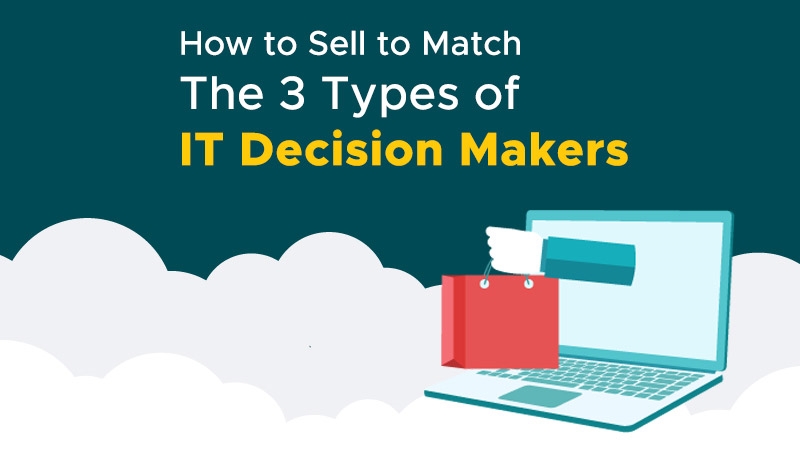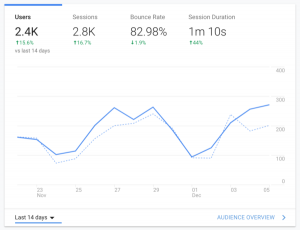— August 5, 2018

When you are in the IT B2B arena, chances are you will deal with different types of decision-makers in different levels of management. These people can be the IT Managers, CIOs, CTOs, VPs, or CEOs.
If you are lucky enough (pun intended), you might find yourself like a bouncing ball as one decision maker tells you to go to another decision maker. In fact, you might be making the same pitch in front of different high-ranking people in the same company.
Doing the same thing over and over again gets easier in time, but the real challenge is convincing different decision makers with different values to buy your product or services.
Before you map out a strategy, get to know the different types of IT Decision Makers and how to deal with them:
The Usual Target
When thinking of decision makers, top-level executives come to mind. After all, C-suite executives get the final word in the buying decision. However, they have a lesser role in the buying process than you may expect. If you focus your marketing efforts solely on them, the effectiveness of your approach is limited because:
- C-Suite executives are smaller in number.
- It is expensive and time-consuming to reach them.
- They are busy people and will most likely delegate your marketing to their IT team for analysis.
What You Can Do
The best approach is to contact only one C-Suite executive. This person has access to other decision-makers and greatly influences the buying decision. It is the C-Suite executive who will gain or lose the most by deciding for or against your sales opportunity.
However, you have to gain their trust first. You can’t sell to these organizations if you’re a stranger to them and their world. It includes understanding the industry they are in, their business goals, the people that will be affected by their buying decision, and the factors that can influence their buying decisions at the last minute.
Establish yourself as a credible advisor with integrity first. You need to have the solutions they have been trying to develop, and the C-Suite executive can see that the organization will benefit from the experience.
The Do-it-all
Small IT business owners are IT buyers, but they don’t have the time it takes to review your proposal for consideration. They most likely have a small team that lacks experience in the strategies you are a master at.
You may have the solution to the problems or challenges they face, but they are unwilling to spend time learning about your organization.
What You Can Do
If you talk about future ROI and a long-term plan, you may not get their attention quickly. Small IT business owners are focused on their problems now. If you can provide them with solutions for instant relief, then you can win more of their time.
Like C-Suite executives, you need to prove you understand their business and the pain points they are experiencing now. Skip the sales talk because not one of the three IT decision makers is influenced by selling to them.
Instead, focus on building a deeper relationship. Educate your target audience, and you can position yourself as the go-to advisor for solving their pain points and achieving their desire.
Make it as pain-free as possible for them to adopt your solutions. This means providing constant support throughout the process. You need to help them understand what they bought, how they can reap the most benefits from your products and services, and how to add features along the way.
The Know-It-All
Do you know what happens to your marketing proposal after you submit it to an organization? Most of the time, it will get passed on to an IT team along with a bunch of other proposals from your competitors. B2B marketers often bypass them, but they are the ones who are most heavily involved in the buying process.
Most of the efforts of studying your organization and your proposal will be handed over to the IT pros. If you can’t convince them that your solution is what they need, the Business Decision Maker won’t even get to see it.
The IT pro’s job is to recommend the best solution to the Business Decision Maker. This will immensely affect the final purchasing decision.
What You Can Do
There are two ways to get to them. One, influence those above them and two be smarter than them (or at least as knowledgeable). The first technique requires working with a deep tech PR expert to publish content that will directly influence his higher-ups.
If you can get his boss to look into your organization and give his thoughts, you must be prepared with highly-visible solutions. This brings us to the second point which is knowledge of their industry and business goals.
You need to show them how you can add value to their company. It includes understanding their needs and pain points more than the solution you have. Doing this will help you make the solution personalized, a gesture they will greatly appreciate because you clearly took the time to find out about their problems and needs.
Conveying what you know about their problems without any mention of sales will earn you their respect. Don’t overtly sell something and don’t offer them your biased point-of-view towards a single solution.
Closing the Deal
Build trust and position yourself an asset to the whole organization. Your knowledge of their industry, their pains, desires, and your assurance of guidance and support throughout the process will earn their trust. Do your research and consider all the influential factors in the buying process.
Move towards earning their respect, trust, and cultivating a relationship. Position yourself as a knowledgeable problem-solver rather than an annoying salesman. As Zig Ziglar puts it, “You can have everything you want in life, if you will just help other people get what they want.”
This article originally published at The Savvy Marketer.
Business & Finance Articles on Business 2 Community
(67)
Report Post





